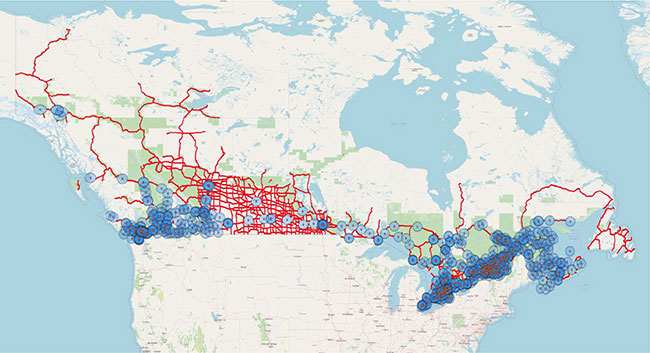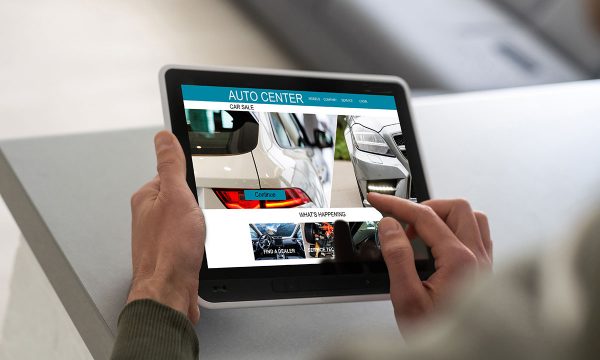
Map of DC Fast Charging stations within a 3 km of rank 1, 2 and 3 highways (excluding Tesla’s proprietary Superchargers).
Driving an electric car is starting to feel very similar to driving a gas car, at least where vacation planning is concerned.
Canadians love to travel, and with the COVID-19 situation many Canadians who typically fly to their summer vacation destination opted instead to travel by car to new destinations in 2021.
As the number of dealership customers considering an electric vehicle continues to grow, there will inevitably be an increase in the number of questions from prospective buyers on traveling with an EV.
Traveling in an EV today has nothing to do with what it meant to travel in one five or 10 years ago. That’s due to two major differences: vehicle range and DC Fast charging station coverage.
Almost all EVs currently being sold in Canada now have a 300 km-plus range, with ranges approaching and exceeding 400 km becoming the norm rather than the exception.
Five years ago an EV “road trip” meant that the “road would define your trip”—as in, you’ll be stopping regularly every 100-200 km to charge, and you will need to plan each activity carefully around charging locations to make the most of your travel time.
The increase in EV range in recent years has had a major effect on EV travel. With today’s range, most EV charging stops are no longer being made because the car had to, but because the driver (and/or passengers) wanted to.
Whether the stop was for a night at the hotel, for a meal, for a planned activity, or for a coffee and washroom break, most EV charging events today happen simultaneously, and as a convenient “by-product” of another trip event (and not the other way around). This makes EV travel much more similar to what most Canadians were previously accustomed to with their gas car.
On top of the vehicle range increase, there is another factor that has had a major impact on long range EV travel in 2021: the deployment of public charging infrastructure.
The areas where a majority of Canadians live, travel and vacation are now entirely serviced by DC Fast charging stations, in such a way that there is almost always a DC fast charging station next to the highway on any 50 km stretch of road.
The map above, compiled from ChargeHub’s data in the first quarter of 2021, shows the exact coverage for highway-adjacent DC Fast charging stations. It is clear from this map that most of Eastern and Western Canada’s southern highways are now well covered.
Central Canada still has some highway gaps that make EV road trips in the prairies a bit similar to what they were five years ago in Eastern and Western Canada. But all in all, most Canadian EV drivers are in a position to plan their trips around where they “want” to stop, as opposed to where they “have” to stop.
What’s the net effect of this for Canadian car dealers?
For a majority of car dealers, this means that prospective buyers can be reassured that yes, they can do their annual summer road trip with their new EV and stop where they want to, for whatever reason, the same way they used to with their previous gas car.

Total amount of highway kilometres vs. DC Fast Charging Station coverage by province (excluding Tesla’s proprietary Superchargers).
What’s more, given the rapid rate of deployment of new DC fast chargers in Canada, by the time you review the map within this column, with any prospective EV buyer, actual highway coverage will likely have increased to a point where only very remote highways are not yet fully covered.
In fact, since the compilation of this map and data just a few months ago, Newfoundland Labrador has already deployed 14 new DC fast charging stations that cover a majority of its highway system!
Five years ago an EV “road trip” meant that the “road would define your trip.”
The fact that, for most Canadians, vacation travel in an EV is becoming analogous to vacation travel in a gas car removes a barrier to adoption. Old habits die hard, but luckily, with good education, most prospective EV drivers entering your dealership will realize that nowadays, they don’t need to change their traveling habits in a meaningful way when driving an electric car.










